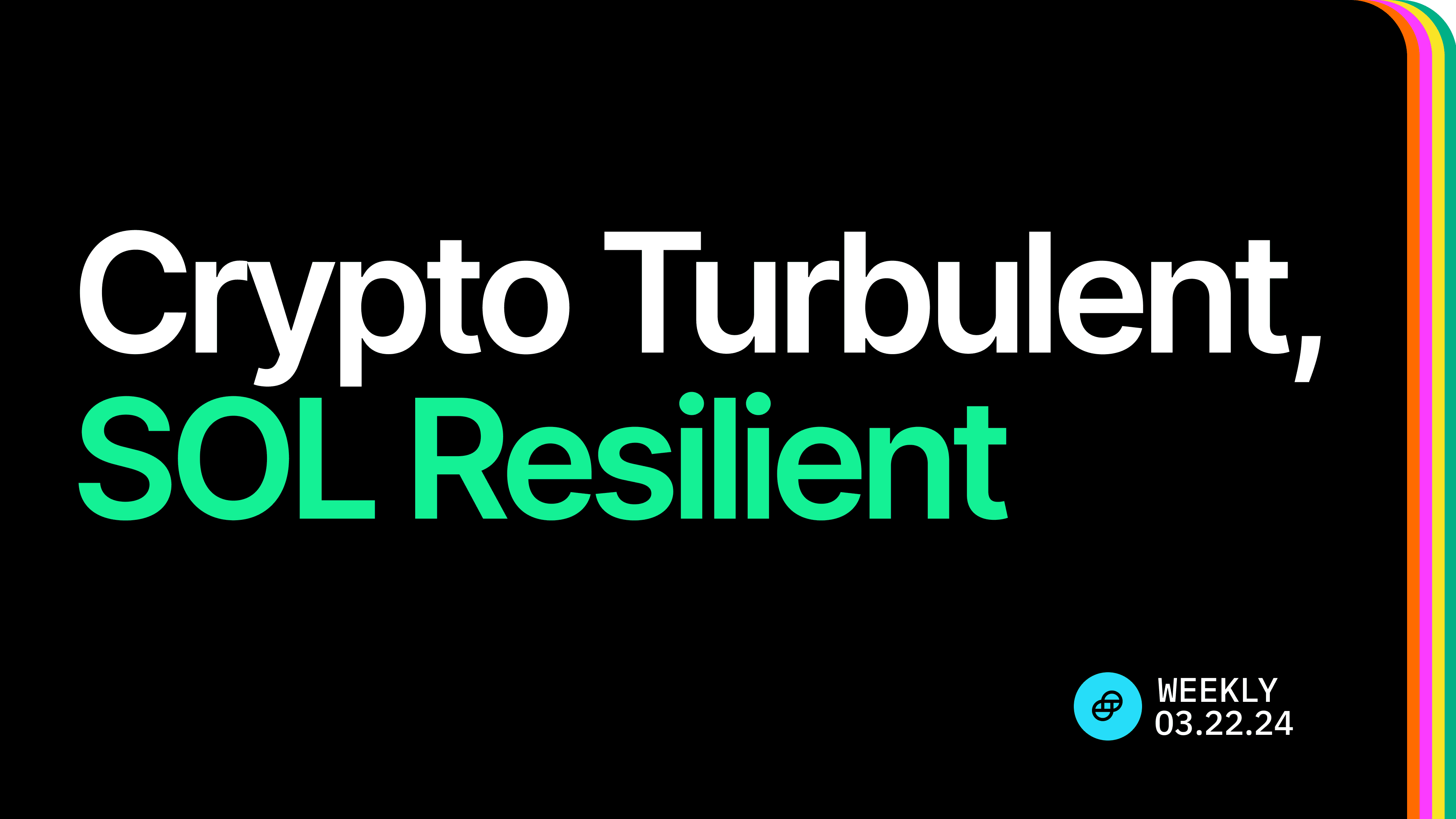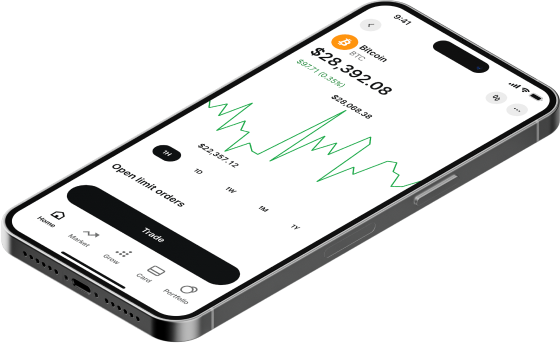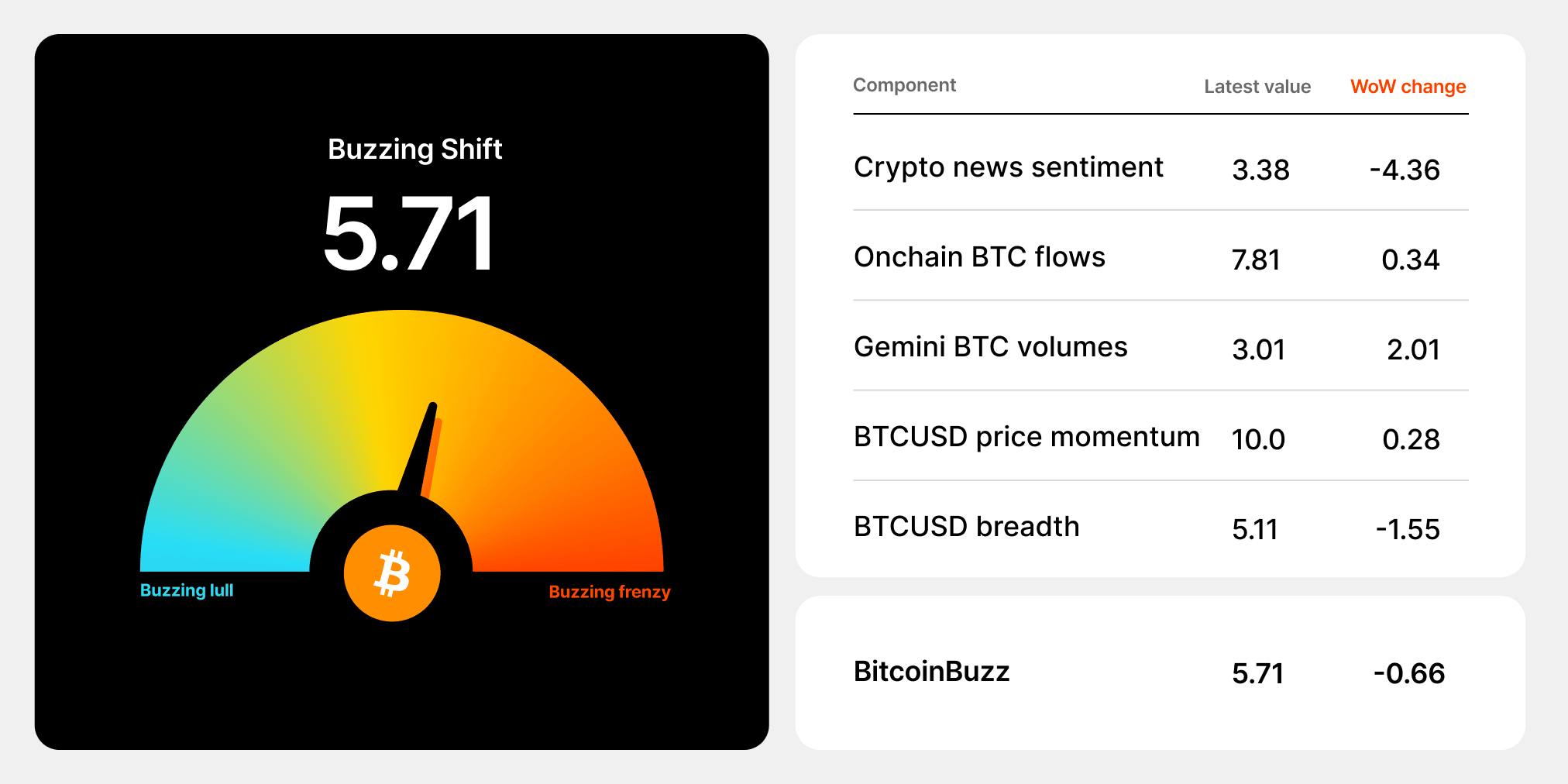MAR 22, 2024
BTC and ETH Suffer After a Strenuous Week of BTC ETF Outflows and ETH ETF Approval Uncertainty, While SOL Shows Strong Resistance against Downward Market

Welcome to our Weekly Market Update.* Explore weekly crypto price movements, read a quick digest of notable market news, and dive into a crypto topic —this week we revisit the halving and its impact on crypto markets.

| Token | Change* | Price** | ||
|---|---|---|---|---|

Bitcoin
BTC | -2.00% | $64,275.35 |
$64,275.35
-2.00%
| |

Ether
ETH | -4.38% | $3,404.00 |
$3,404.00
-4.38%
| |

Zebec Protocol
ZBC | +74.05% | $0.03948 |
$0.03948
+74.05%
| |

Fantom
FTM | +52.13% | $1.1812 |
$1.1812
+52.13%
| |

Ethernity Chain
ERN | +35.17% | $7.2978 |
$7.2978
+35.17%
|
*Percentages reflect trends over the past seven days.
**Crypto prices as of Friday, March 22, 2024, at 8:00am ET. . All prices in USD.

Takeaways
- BTC drops below $61K for the first time since the start of March: Investor confidence dwindled as the market saw the first consecutive negative outflow days for the Bitcoin ETFs this month, with Grayscale Bitcoin Trust (GBTC) experiencing its biggest outflow since launch of $642.5M on Monday, followed by another sizeable $443.5M outflow on Tuesday.
- Fed keeps interest rates unchanged: The US Federal Reserve held interest rates at the May FOMC meeting, but is still anticipating three cuts by the end of the year. This was widely celebrated by markets as the S&P 500 and Nasdaq set a new all-time high and bitcoin reclaimed $67K.
- Hope for ETH ETF approval by the Securities and Exchange Commission (SEC) dwindling: The price of Ether (ETH) experienced a fairly dramatic fall this week from $3.64K to as low as $3.06K on Wednesday morning. The fall was in response to a recent sentiment shift around the possible ETH ETF approval in the coming months. Recent SEC delays to proposals from VanEck, Ark, Hashdex and Grayscale, along with comments from prominent ETF analyst James Seyffart suggesting the SEC will decline these approvals, have lowered confidence among investors.
- SOL defies market downward trend and breaks above $200: For the first time in two years, broke above $200 this week, with analysts suggesting this could be linked to the large surge in activity on the Solana network, which has been driven by a frenzy for newly launched Solana-based memecoins.
- AI fascination continues as NVIDIA AI conference kicks off this week: The conference caused a short-lived rally in AI tokens, despite the overall downward market trend in the market this week, with Render (RNDR), Akash (AKT), Fetch.AI (FET) and Bittensor (TAO) all posted double-digit gains.
Sign up for a Gemini account
The secure way to buy, sell, store and convert crypto. Millions use Gemini to diversify their portfolios.

BTC feels the pressure amidst a poor start for spot BTC ETFs
BTC started the week off hovering around the $68k level but has since faced immense selling pressure over the first half of the week dropping as low as $62.5K on Tuesday morning. The price of BTC fought back on Tuesday evening though, rallying back towards $66K before facing another wave of sell pressure that pushed the price below $61K for the first time since the start of March.
Investor confidence may have started to show its first signs of waning with the spot BTC ETFs starting the week off poorly. Grayscale Bitcoin Trust (GBTC) had since launch of $642.5M on Monday, $443.5M of outflows on Tuesday, and $386.6M of outflows on Wednesday. This led to spot BTC ETFs registering negative outflows for the first time since launch.
Fed still expecting to cut interest rates by end of year
The US Federal Reserve held rates in its March FOMC meeting, with its members still expecting three interest rate cuts this year, which would indicate the benchmark federal fund rate will move lower to a median of 4.6% from its current level of 5.25-5.5%.
Markets, including stock and crypto investors, had been derisking leading up to the FOMC decision, and cheered the news after the decision and Fed Chairman Powell’s press conference. The S&P 500 and Nasdaq set a new all-time high, while bitcoin pared losses and rallied back to reclaim the $67K level.
Sentiment shift in possible ETH ETF approval sees ETH price tumble
The price of ETH experienced a fairly dramatic fall this week, in comparison to Bitcoin, with the price dropping from $3.64K to as low as $3.06K on Wednesday morning and the ETHBTC pair falling from 0.053 to 0.051.
Ethereum's move lower appears to be exacerbated by the around the possible ETH ETF approval in the coming months. Recent SEC delays to proposals from VanEck, Ark, Hashdex and Grayscale, along with comments from prominent ETF analyst James Seyffart have lowered confidence among investors. On Tuesday X that “the SEC hasn’t engaged with issuers on Ethereum specifics. Exact opposite of Bitcoin ETFs this fall,” and that “we now believe these will ultimately be denied May 23rd.”
Also on Wednesday, there were separate reports that a “state authority” is investigating the activities of the Ethereum Foundation and that the SEC is launching a campaign to categorize ETH as a security, contradicting the agency’s public statements in the past.
One positive development this week was the announcement that BlackRock and Securitize would partner together to launch a $100M tokenized fund based in USDC on Ethereum.
SOL bucks market downward trend and breaks above $200 for the first time in two years
Despite the large drawdowns across the markets, and broke above $200 for the first time since December 2021 to become the fourth-largest cryptocurrency by market capitalization.
The recent gains could be linked to the large surge in activity on the Solana network which has been driven by a . Most notably, Book of Meme (BOME) skyrocketed from 0 to a market cap of $1.45B in 56 hours and was listed on large exchanges such as Huobi and Binance within days of launch.
Double-digit gains for AI tokens in anticipation of AI conference
Artificial Intelligence (AI) has been a prominent narrative in crypto over recent months and gathered further momentum last week ahead of the that started on Monday.
Interest in AI tokens have previously peaked around earnings for NVIDIA, with similar activity taking place in relation to the ongoing conference as AI-related crypto tokens such as Render (RNDR), Akash (AKT), Fetch.AI (FET) and Bittensor (TAO) all over the weekend as excitement around the event built. However, a surge in price could not be sustained as the conference progressed, with prices cooling alongside the dip across the broader market.
-From the Gemini Trading Desk


data as of 5:14pm ET on March 20, 2024.
To learn more about the BitcoinBuzz Indicator and its components, . Check back every week for an updated score!

The Native Scalability of the Solana Blockchain
The scalability problem has plagued many cryptocurrencies since almost day one. Blockchain ledgers and decentralized payment networks provide decentralized security to users — but usually, the more decentralized security they provide, the longer it can take for new transactions to be verified and added to the blockchain. These networks are faced with the challenge of providing ample transaction speed as their user count and transaction volume continues to increase, while still preserving the security and decentralization of the network.
When we talk about and throughput, we’re referring to how many transactions can take place per second (this capability is called transactions per second, or TPS). With a high volume of transactions occurring every second, time becomes a crucial element for efficiency. Each computer (or ) processing transactions on a decentralized blockchain network has its own internal clock on which it operates.
With thousands of nodes all over the world, there are bound to be slight discrepancies with local system clocks. This becomes problematic when the decentralized network needs to reach consensus about which transactions have taken place and the order in which they occurred. The timestamp synchronization problem is inherent in both (PoW) and (PoS) consensus mechanisms.
When transactions occur, they are according to their local system clock. Then, when other nodes verify the transactions, messages about their confirmation or rejection are also timestamped. The inherent discrepancies between local system clocks (even those from nodes acting in good faith) ultimately pave a path for attacks where bad actors can try to take over a cryptocurrency network using fake transaction broadcasts that closely approximate real timestamps — for example, “fake stake” (or “resource exhaustion”) attacks in the case of PoS, and in the case of PoW. To ensure that transactions have not been manipulated and that funds are spent only once, a lot of time and processing power needs to be dedicated to verifying timestamp accuracy in a PoW or PoS system.
When all the respective clocks across the decentralized network are synchronized, transactions take much less time to verify because individual nodes do not have to dedicate so much processing power toward verifying various timestamps. This synchronization allows the network to optimize for speed, and as a result, the Solana blockchain is inherently fast and engineered for native scalability — enabling higher energy efficiency and higher security through the low processing power and the tamper-resistant nature of its synchronized timestamps. Solana’s efforts to boost transaction speed rely on a semi-centralized structure in which a node leader is elected and all nodes agree to adopt one universal source of time.
Solana’s built-in mechanism for synchronizing time across nodes helps the network support a , as of 2022. The protocol is theoretically designed to scale with , doubling in capacity every two years with improvements in hardware and bandwidth. In other words, as computers get faster, so will Solana.
See you next week. Onward and Upward!
Team Gemini
*This material is for informational purposes only and is not (i) an offer, or solicitation of an offer, to invest in, or to buy or sell, any interests or shares, or to participate in any investment or trading strategy, (ii) intended to provide accounting, legal, or tax advice, or investment recommendations, or (iii) an official statement of Gemini. Gemini, its affiliates and its employees do not make any representation or warranty, expressed or implied, as to accuracy or completeness of the information or any other information transmitted or made available. Buying, selling, and trading cryptocurrency involves risks, including the risk of losing all of the invested amount. Recipients should consult their advisors before making any investment decision. Any use, review, retransmission, distribution, or reproduction of these materials, in whole or in part, is strictly prohibited in any form without the express written approval of Gemini.
RELATED ARTICLES

WEEKLY MARKET UPDATE
DEC 04, 2025
Bank of America and Vanguard Warm to Crypto, Goldman Strikes Deal for ETF Issuer, and Strategy Sets Up $1.4B Reserve

COMPANY
DEC 03, 2025
USDG Is Now Available on Gemini

INSTITUTIONAL
DEC 03, 2025